- Home
- Piers Anthony
Spider Legs Page 2
Spider Legs Read online
Page 2
Garth turned on the boat's engine and pointed the craft in the direction of a peculiarly shaped iceberg which contained a myriad of exotic wave-cut patterns. At one moment the crevices were filled with green water. The next moment they were throwing white, foaming water back into the ocean. For the few seconds between the inrushing and outrushing of water, the caverns displayed thousands of pieces of pointed ice like sharks’ teeth—white, green, and aquamarine.
Garth's curiosity about the ocean overwhelmed him at times. At 16, he had dived for the first time, donning an old helmet, weights, and compressed air to explore a Maine river bed. While at Yale University studying marine biology, he was introduced to sophisticated scuba gear. Even after his marriage at 21 to Kalinda, and the birth of their child Alan, he kept his attention focused on diving deeper and discovering the way the oceans worked.
Kalinda came up through the hatch and handed him an apple.
“Thanks,” he said. Kalinda stared at the man with her sparkling eyes and then hooked her thumb in her shirt pocket and cocked her hip. He gazed at her and took her hand.
“Like your outfit,” Garth said. Kalinda wore his flannel shirt, and nothing else.
“I better get something on before I freeze to death,” she said, shivering. She was a slim woman, 27 years of age, with honey-colored hair, and eyes the darkest green.
“Why don't I warm you up first,” Garth said as he kissed her on the lips.
“At least the weather's a bit warmer today than yesterday,” she said with a charming smile that involved her eyes as well as her mouth. Like Garth, Kalinda was interested in the sea. Three years before she had been invited to join the National Science Foundation's research vessel Anton Bruun for a three-week exploration of the oceans near Madagascar. Together Garth and Kalinda had gone on expeditions to the Juan Fernández islands and the Galapagos Islands. Their parents, ever supportive, took care of their four-year-old during these trips.
“You really must be cold.” He patted the crease of her bottom through the shirt. “Shall I follow you into the cabin?” He drew back enough to stare at Kalinda's nipples, which rose like goose bumps from beneath her inadequate outfit.
“I better put a coat on,” she said, winking.
He placed his fingers under her shirt and felt her naked buttocks. He began to stroke her. She was right: her body was cold, like the anatomy of a statue. It was an interesting experience. “Galatea,” he murmured.
“But I'm no ivory statue,” she said. For Galatea, in mythology, was a beautiful statue later animated by the prayer of her lover.
“That's because I'm bringing you to life,” he said, massaging her projecting flesh.
“Mmmm,” she purred as he followed her to the cabin.
Garth had convinced Kalinda that the ultimate in unusual vacations was the North Atlantic where they could spend some time traveling among the awesome floating mountains, the icebergs. He had explained to Kalinda that the weather was fairly mild near Newfoundland. The presence of the sea moderated the temperature in the winter. The average temperature in January was about 20 degrees Fahrenheit, and 55 degrees F weather was common in the summer. However, only the south coast was ice-free throughout the winter. At first she thought his vacation idea was crazy, but when he showed her some photographs the U.S. Coast Guard supplied of magnificent ice giants plodding through Baffin Bay, she gave into the crazy adventure. They started in Quebec, traveling along the St. Lawrence River in their schooner, and continued through the Cabot Strait into the Atlantic.
Occasionally they docked along the coast of Newfoundland where weathered bald mountains rose almost from the water. Newfoundlanders affectionately called their Island of Newfoundland “the Rock.” Battered by the Atlantic Ocean at Canada's easternmost point, it sometimes seemed a harsh place—remote and watery. Until the early 19th century, fish merchant monopolies, piracy, and international rivalry fiercely discouraged permanent settlement. Recently, however, Newfoundland had both modern amenities and rural values. In the past decade the government had begun to pursue an economic policy based on forestry, fisheries, and hydroelectric power. The fisheries remained the largest resource-sector employer, providing full-time work to 20,000 fishermen.
They had come to St. John's, checked in with Garth's lovely little sister Lisa, and now were on one of their side jaunts, forging north along the east coast of the island. The wind had been wrong on prior days, and that could make a difference, but this time it was right, and they were going against the current to see the icebergs. They were in no hurry.
“Are you warm yet, Galatea?” he inquired.
“Alive, but not warm,” she replied. “Maybe if you heat me from the inside . . .”
There was silence while he did his best. In due course she confessed to having been warmed throughout.
An hour after making love, Garth and Kalinda emerged from the cabin to look at the coast with its charming village ports and then back at the large floating chunks of ice. “Do you think it's such a good idea to get so close to the glacier?” Kalinda asked as she turned her head. The light caught her silky hair turning it into the color of a Hawaiian sunset.
“Nothing to worry about. We'll go slow,” Garth said as he tiptoed his fingers from her calf to her knee. There was usually little danger when sailing in these seas due to the number of Coast Guard boats in the area. Ever since the steamship Titanic collided with an iceberg and sunk, ship lanes near Newfoundland had continued to be patrolled by one or two American Coast Guard boats during the seasons when icebergs were drifting. Several nations helped to defray the cost of this patrol service.
“There must be hundreds of icebergs!” Kalinda said. Some looked like gigantic pyramids, hummocked in places to form the frigid likenesses of yawning lions. Garth turned to Kalinda.
“The location of every iceberg in these waters is radioed to the ships in the neighborhood. We can't get lost even if we wanted to.”
“Let's be careful,” Kalinda said. “I'd hate to collide with an iceberg.”
“You're always such a worrier,” he said, smiling.
“If I didn't worry, I think you'd have killed yourself by now,” she said, perhaps thinking of the time he had nearly crashed the schooner into a coral reef a year ago.
Garth nodded as he edged the two-masted, motor-powered schooner even closer to an iceberg. Even though he realized that eight times as much of the ice was under the water than above, it was hard to fully appreciate that the beautiful blue waves concealed a mass of ice much larger than the behemoth before their eyes. Flashes of sunlight began to reflect off the berg's crystalline surfaces, producing an astonishing collection of scintillating orange and blue colors.
“Magnificent,” Kalinda said as she pointed to the icefields, which glimmered like mercury. “The colors remind me a little of the sparkling crystals on the chandelier in my mother's home.”
“Look at that one,” Garth pointed. “Those kinds of glacial ice are known as ‘dry docks’ because of their deep U-shaped indentations. See the sparkling ponds of water at the bottom of the U?”
“Wouldn't want to get trapped at the bottom. How much do you think it weighs?”
“Probably around two million tons.”
Suddenly the iceberg broke into several huge pieces, as if someone had exploded dynamite in its icy interior. It made a noise like thunder, which could be heard for several miles.
“Grab onto something,” Garth cried. Kalinda ran toward the mast as rings of large waves began to radiate from the berg in all directions. The schooner began to pitch and roll as if it were in a great storm.
“Ahh,” Kalinda cried as cold particles of salt spray splashed and ran down her legs. Part of the berg began to die with a crackling and crumbling. There were such roars of agony that it sounded as if the Phantom were under siege by cannons. When the waves subsided Garth decided he better be the first to speak.
“Everything OK?”
“I thought you said this was safe,” she s
aid sarcastically.
“Sorry. The bergs sometimes do that. Didn't realize how powerful the effect could be.” After hours of direct sunlight had melted the surface ice, internal strains in the frozen water were manifest in what Newfoundland fisherman called iceberg “foundering"—the bergs exploded into huge chunks of ice. With a horrifying roar, blocks of ice bigger than a house sometimes broke away from the ice mountain.
But as Garth and Kalinda guided their craft among the icebergs for a few hours, they grew accustomed to the cacophonous sounds and sight—even grew to love them. They learned to navigate the boat among the icebergs with the grace of a downhill skier gliding back and forth between trees.
“Most of these icebergs come from the west coast of Greenland,” Garth said.
“Right, I read about that. They also drift for around three years before reaching their deathbed in the warm Gulf Stream.” Occasionally Kalinda liked to remind Garth about her own knowledge in marine geology, something Garth every now and then seemed to forget when he got into his scientific lecturing mood.
Now the sea was calmer.
“Care for a drink?” Garth asked.
“No thanks.”
“A nap?”
“Maybe later.” Although she might be tired, Kalinda evidently didn't want to miss the wonderful sights all around her.
Garth picked up a newspaper and began to leaf through it. “It says here that there are less codfish in the seas for the fishermen to catch these days, and that the Canadian government is subsidizing the fishermen. Wonder what could cause the sudden decline of fish?”
“Maybe they simply were overfishing the limited local supply.”
Garth turned the pages of the newspaper. A colorful advertisement caught his eye: it was for Martha's Fish Store, which purported to be the largest marine and freshwater aquarium store in Newfoundland. It also claimed to have a tank with over one thousand neon tetra fish. He handed the advertisement to Kalinda.
“Let's take a look at Martha's Fish Store when we get back to the land. No sense in depending on Lisa for all our information.”
“I'd love that.”
As they traveled along the coast, with a few dozen icebergs in sight, the frequent roar of foundering icebergs made an otherwise serene setting more exciting than a roller coaster ride. At times even the noise of their ship's six-cylinder diesel engine couldn't be heard over the thunder of the bergs.
Garth yawned.
“Why don't you let me steer for a while,” Kalinda said. “You take a nap below.”
“Not a bad idea.” Garth got stiffly to his feet, ducked under the boom, and checked a few ropes. Then he went to the hatch. He turned to Kalinda. “Come down if there's any problem.”
Below, in a small, cozy room with a soft bed, a refrigerator, and other amenities, Garth checked a few maps and a compass. Then he examined his new chart drum navigator which enabled him to use traditional paper charts with loran or Global Position Satellite navigations systems.
Garth was always amazed at how well the loran system worked for determining his vessel's position. Like radar, this electronic system for long range navigation was a World War II development. Unlike radar, loran required no special transmission from the ship. Instead a radio receiver operating on a low frequency gave loran the capability of receiving signals at great distances. Loran transmitting stations on shore operated in pairs; one was called the master, the other the slave station. The time difference between arriving signals allowed the ship to be located on a loran chart. Loran stations throughout the world afforded extensive loran coverage, but a ship had to be within 700 miles by day and 1,400 miles at night to receive the loran signals.
Earlier in the morning he had slipped a chart of the Newfoundland waters under a plastic overlay on the chart drum navigator. The drum rotated to keep the part of the map he was using in view. A moving red bead marked his boat's current position. So far, so good. They should be back in Bonavista Bay in another few hours.
Without removing any of his clothes, except for his sandals, he dived into bed and stretched out like an old dog. Before he fell asleep he thought about the sea. In spite of its dangers, humans were always attracted to the mystery and beauty of the ocean, the challenge of its unpredictability, from placid calm to raging storm. Since prehistoric times, humans’ personal relationship with the ocean had been unique, unlike ties with other natural surroundings. Perhaps long before scientists realized that the sea was the mother of life, humans intuitively realized that the salty solution, so much like the chemistry of their own blood, was the source of living things.
CHAPTER 4
Spider
THE CREATURE WAS alert as it treaded water near heart-shaped corals that grew like mold from the sea floor. A crimson blob with light splotches rose from the mud in the wake of the pycnogonid. As the sea spider swam its large eyes fixed themselves on a brilliant red nudibrach mollusk, and then the spider crushed it with one of its gigantic legs.
In recent years various pollutants were causing species to mutate at a rate faster than normal. Medical wastes containing growth hormones, bacterial plasmids, and mutagens were being consumed by the local sea species. Many organisms were entirely unaffected, while some of the primitive invertebrates produced offspring with deformities and strange new physical characteristics. Many animals died. Others survived but with size and shape alterations: there were lobsters the size of pigs and with dozens of legs, two-headed crabs, and a multitude of new worm species with bioluminescent throat appendages and eyes the size of almonds. Marine scientists were becoming aware of these mutations and changes, and concern was rising. But they did not yet appreciate the magnitude of what was happening, or guess that not all of it was either natural or by chance. They would have some strong hints, however, soon enough.
As the sea spider stepped on a reef, the reef came alive: large numbers of jelly-roll creatures fled from the crevices. Above was an iceberg. Below glided small sharks and large rays. These were routine.
Suddenly the pycnogonid sensed vibrations emanating from somewhere near the sea's surface. Something big was approaching from above. The terminal claws on the creature's front legs quivered in unison with its huge chelicerae as it decided to climb the iceberg's shelf. Two impulses drove the sea spider: its desire to eat and its innate rage.
It rose for another few minutes and hit the underside of the glacier with a big bump. Crash! A soft explosion of ice was set off by the sea spider. After the vibrations subsided, the pycnogonid gracefully positioned its head downward, flipped its body, and began to walk upside down on the flat underbelly of the glacier—defying gravity with the aid of buoyancy. The sea was its ceiling, the ice its floor. It didn't care. It just wanted to get where it was going, whatever way that worked. It walked along the underside of the glacier until it reached its edge.
In just a few minutes, the body of the pycnogonid broke the water's surface and scrambled up an area of the iceberg which had a relatively gradual slope. Just like its arthropod cousins, the lobsters and crabs, the huge sea spider could live for some time in the fresh air. Its gills began to work in overdrive with what moisture they still contained, sucking in life-giving oxygen from the atmosphere. As it gazed out over the water in the direction of the sound and movement, the creature saw a moving object seemingly about its own size. The fact that the object was large, that it was alien, caused the sea spider no fear. It crept down the precipices and glacial snow-fields into a glacial valley, and then reached the edge of the iceberg which touched the sea. It prepared itself to attack.
CHAPTER 5
Dream
ALTHOUGH AN ICEBERG could be as big as an entire village, any sailor would have rather been shipwrecked on land than on such ice. Aside from the cold, the sides of an iceberg were often very steep. Hidden holes, crevices, and caverns added to the danger. Even if a sailor wanted to explore an iceberg's glistening surfaces and caves, it was usually too difficult for most sailing vessels to dock alongside such
a mass. The unfortunate ship that crashed into one of these islands of ice usually sank, and the water was so cold that even an Olympic swimmer would have died from exposure.
Kalinda had no intention of being shipwrecked on an iceberg and took extra care to stay clear of the mammoth chunks of ice. She carefully steered the boat into a narrow channel between two icebergs, and then in the direction of an impressive rhinoceros-shaped berg with a huge arch in the middle. It was wide enough to hold a football field. On the northern side of the berg was a huge, upward pointing prominence that reminded her of a rhinoceros's horn. From this distance it seemed that a chunk of ice was missing from an area of the rhino's face, forming a dark area which composed the rhino's eye. Kalinda got out her new expensive sophisticated camera and snapped a few pictures. The camera had special protections against water splashed from any direction.
After a minute, she put the camera down. The dark area forming the “eye” on the iceberg seemed a bit strange, she thought, so she decided to take the boat closer for a better look. Just as people enjoyed watching clouds and finding animal and other shapes in their random patterns, sailors often looked at ice formations and imagined sea serpents and mermaids, and other more provocative patterns. She wondered if she should wake Garth up from his nap to see the berg with its pinnacles towering more than fourteen stories high. But of course it wouldn't evaporate before he got his chance.
Kalinda reached over to a radio on the bridge, turned it on, and began bobbing her head to the rhythm of the golden oldie “Please Mr. Postman” by the Marvelettes. Another few minutes passed; then a sudden wild scream startled her. It came from above. She looked up to see a large seagull circling with wings outstretched and motionless. Just a seagull.

 Serial
Serial Question Quest
Question Quest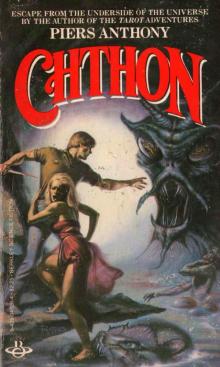 Chthon
Chthon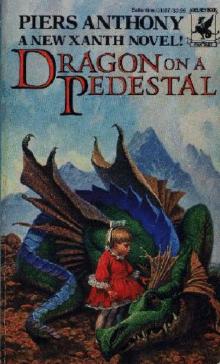 Dragon on a Pedestal
Dragon on a Pedestal E. S. P. Worm
E. S. P. Worm Hope of Earth
Hope of Earth The Series Boxed Set
The Series Boxed Set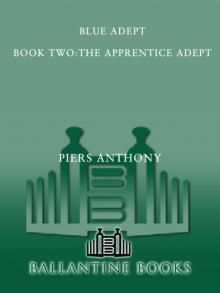 Blue Adept
Blue Adept The Sopaths
The Sopaths Beetle Juice
Beetle Juice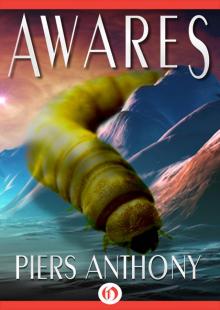 Awares
Awares Golem in the Gears
Golem in the Gears Geis of the Gargoyle
Geis of the Gargoyle Bamboo Bloodbath and Ninja's Revenge
Bamboo Bloodbath and Ninja's Revenge Heaven Cent
Heaven Cent Neq the Sword
Neq the Sword Pandora Park
Pandora Park Juxtaposition
Juxtaposition Bearing an Hourglass
Bearing an Hourglass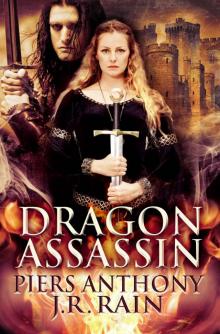 Dragon Assassin
Dragon Assassin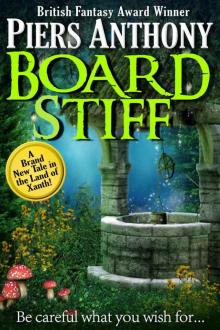 Board Stiff
Board Stiff Virtual Mode
Virtual Mode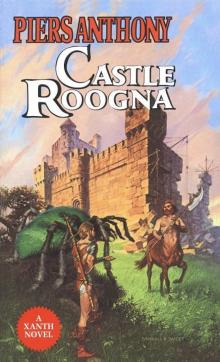 Castle Roogna
Castle Roogna Aliena Too
Aliena Too Pet Peeve
Pet Peeve The Metal Maiden Collection
The Metal Maiden Collection Volk
Volk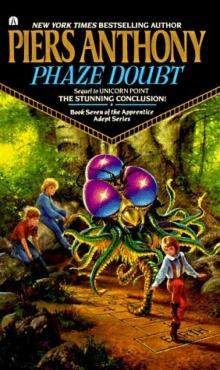 Phaze Doubt
Phaze Doubt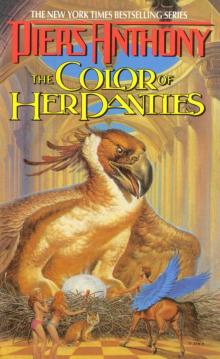 The Color of Her Panties
The Color of Her Panties Amazon Slaughter and Curse of the Ninja Piers Anthony
Amazon Slaughter and Curse of the Ninja Piers Anthony The Worm Returns
The Worm Returns Zombie Lover
Zombie Lover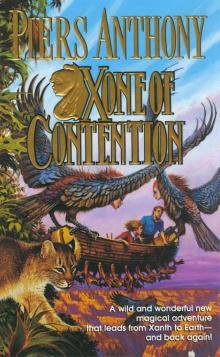 Xone of Contention
Xone of Contention The Gutbucket Quest
The Gutbucket Quest Split Infinity
Split Infinity Dream a Little Dream: A Tale of Myth and Moonshine
Dream a Little Dream: A Tale of Myth and Moonshine Balook
Balook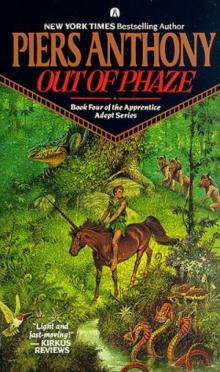 Out of Phaze
Out of Phaze The Secret of Spring
The Secret of Spring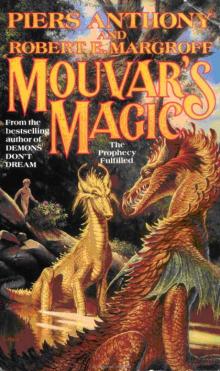 Mouvar's Magic
Mouvar's Magic Cube Route
Cube Route Mercenary
Mercenary Total Recall
Total Recall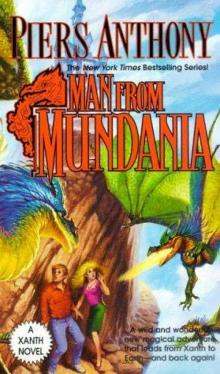 Man From Mundania
Man From Mundania The Magic Fart
The Magic Fart Letters to Jenny
Letters to Jenny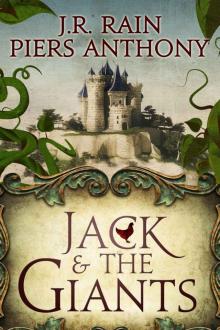 Jack and the Giants
Jack and the Giants Executive
Executive Robot Adept
Robot Adept On A Pale Horse
On A Pale Horse Vale of the Vole
Vale of the Vole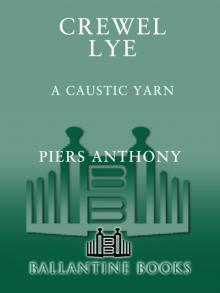 Crewel Lye
Crewel Lye For Love of Evil
For Love of Evil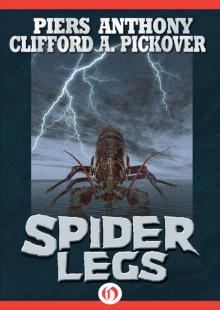 Spider Legs
Spider Legs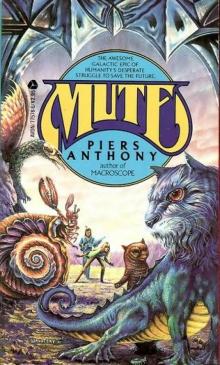 Mute
Mute Being a Green Mother
Being a Green Mother Hair Suite
Hair Suite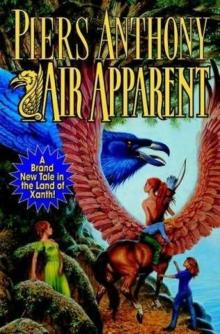 Air Apparent
Air Apparent Politician
Politician Aliena
Aliena Phthor
Phthor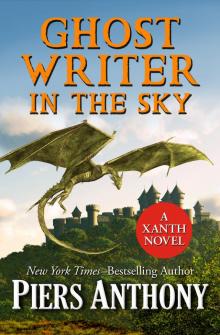 Ghost Writer in the Sky
Ghost Writer in the Sky Pornucopia
Pornucopia Eroma
Eroma Shepherd
Shepherd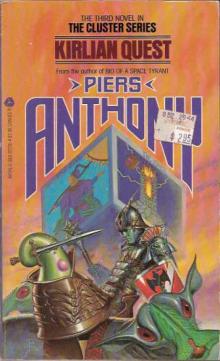 Kirlian Quest
Kirlian Quest Swell Foop
Swell Foop God of Tarot
God of Tarot If I Pay Thee Not in Gold
If I Pay Thee Not in Gold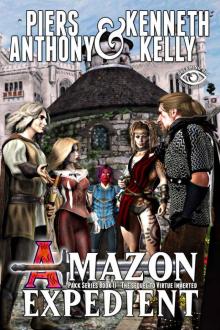 Amazon Expedient
Amazon Expedient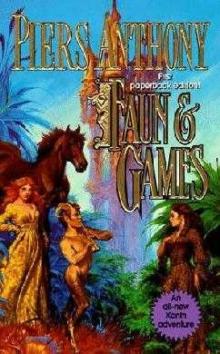 Faun & Games
Faun & Games Vision of Tarot
Vision of Tarot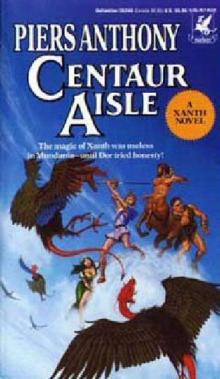 Centaur Aisle
Centaur Aisle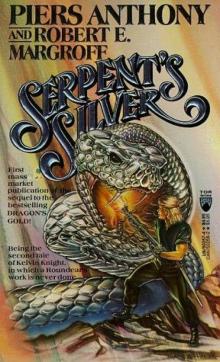 Serpent's Silver
Serpent's Silver Cluster
Cluster With a Tangled Skein
With a Tangled Skein Chaining the Lady
Chaining the Lady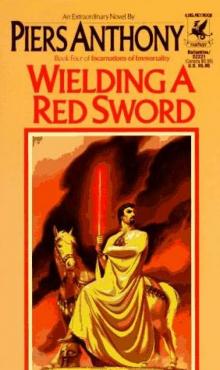 Wielding a Red Sword
Wielding a Red Sword Key to Chroma
Key to Chroma WereWoman
WereWoman Isis Orb
Isis Orb Hair Peace
Hair Peace Two to the Fifth
Two to the Fifth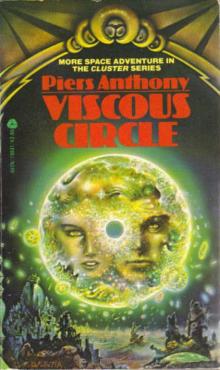 Viscous Circle
Viscous Circle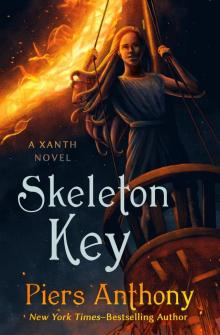 Skeleton Key
Skeleton Key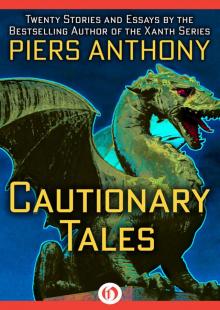 Cautionary Tales
Cautionary Tales The Source of Magic
The Source of Magic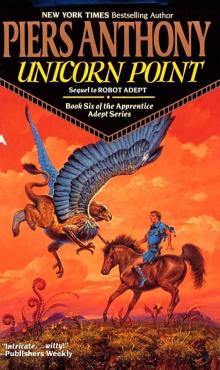 Unicorn Point
Unicorn Point Writer's Retweet
Writer's Retweet Demons Don't Dream
Demons Don't Dream Ogre, Ogre
Ogre, Ogre The Iron Maiden
The Iron Maiden Tortoise Reform
Tortoise Reform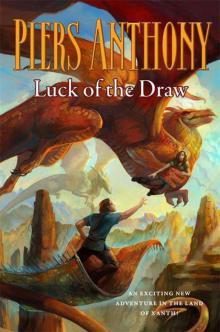 Luck of the Draw
Luck of the Draw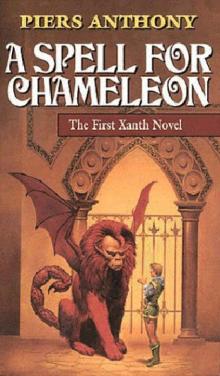 A Spell for Chameleon
A Spell for Chameleon Yon Ill Wind
Yon Ill Wind Currant Events
Currant Events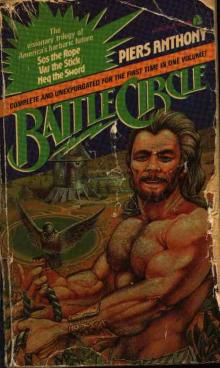 Var the Stick
Var the Stick And Eternity
And Eternity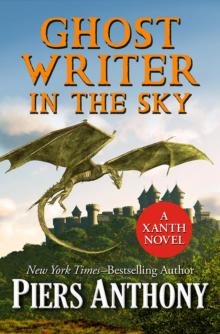 Kiai! & Mistress of Death
Kiai! & Mistress of Death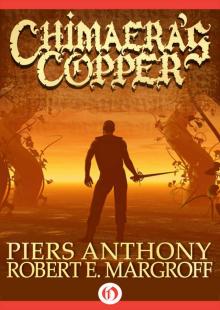 Chimaera's Copper
Chimaera's Copper Refugee
Refugee Isle of View
Isle of View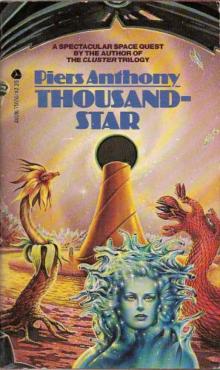 Thousandstar
Thousandstar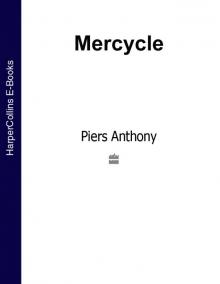 Mer-Cycle
Mer-Cycle Service Goat
Service Goat Five Portraits
Five Portraits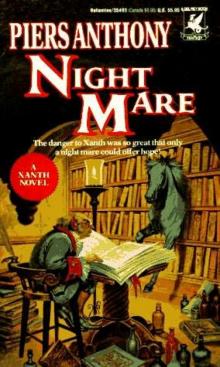 Night Mare
Night Mare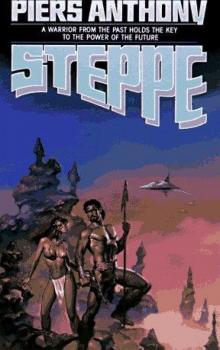 Steppe
Steppe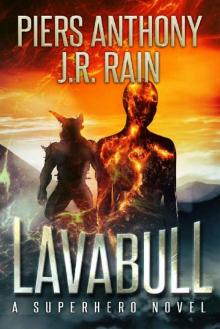 Lavabull
Lavabull Well-Tempered Clavicle
Well-Tempered Clavicle Aladdin Relighted
Aladdin Relighted Aladdin and the Flying Dutchman
Aladdin and the Flying Dutchman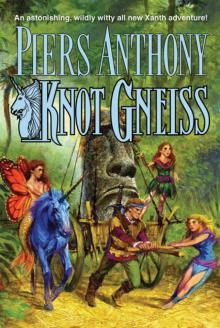 Knot Gneiss
Knot Gneiss Roc and a Hard Place
Roc and a Hard Place Aladdin Sins Bad
Aladdin Sins Bad Flytrap
Flytrap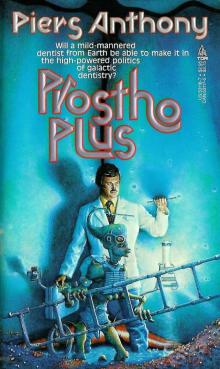 Prostho Plus
Prostho Plus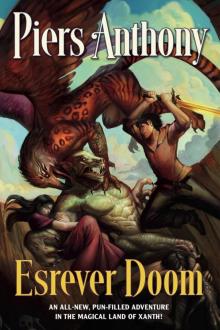 Esrever Doom
Esrever Doom Hair Power
Hair Power The Journey
The Journey Virtue Inverted
Virtue Inverted Of Man and Manta Omnibus
Of Man and Manta Omnibus Trail Mix: Amoeba
Trail Mix: Amoeba Noah's Brick
Noah's Brick Odd Exam
Odd Exam Magenta Salvation
Magenta Salvation Jest Right
Jest Right Fire Sail
Fire Sail Chthon a-1
Chthon a-1 Amoeba
Amoeba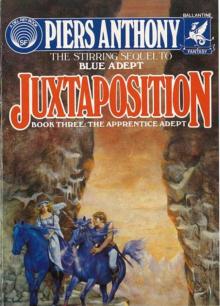 Juxtaposition aa-3
Juxtaposition aa-3 Pira
Pira THE CATERPILLARS QUESTION
THE CATERPILLARS QUESTION What Fears Become: An Anthology from The Horror Zine
What Fears Become: An Anthology from The Horror Zine Bio of a Space Tyrant Vol. 3. Politician
Bio of a Space Tyrant Vol. 3. Politician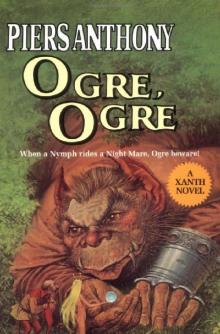 Ogre Ogre x-5
Ogre Ogre x-5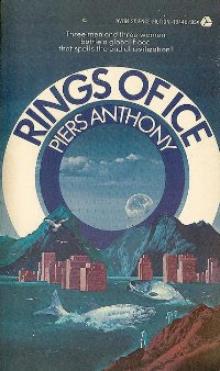 Rings of Ice
Rings of Ice On a Pale Horse ioi-1
On a Pale Horse ioi-1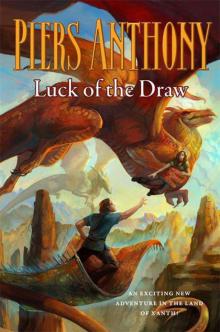 Luck of the Draw (Xanth)
Luck of the Draw (Xanth)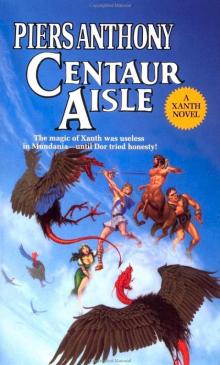 Centaur Aisle x-4
Centaur Aisle x-4 Thousandstar (#4 of the Cluster series)
Thousandstar (#4 of the Cluster series) Gutbucket Quest
Gutbucket Quest Isle of Woman (Geodyssey)
Isle of Woman (Geodyssey) Chaining the Lady c-2
Chaining the Lady c-2 To Be a Woman
To Be a Woman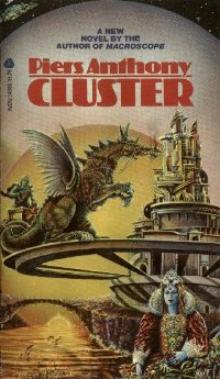 Cluster c-1
Cluster c-1 Battle Circle 2 - Var the Stick
Battle Circle 2 - Var the Stick Mercenary (Bio of a Space Tyrant Book 2)
Mercenary (Bio of a Space Tyrant Book 2)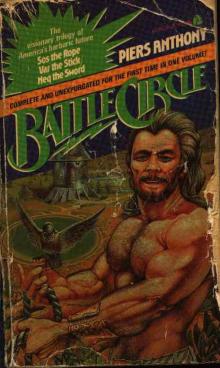 Battle Circle 1 - Sos the Rope
Battle Circle 1 - Sos the Rope Xanth 30 - Stork Naked
Xanth 30 - Stork Naked Secret of Spring
Secret of Spring Xanth 29 - Pet Peeve
Xanth 29 - Pet Peeve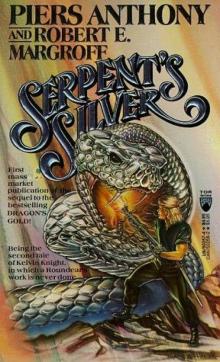 Serpents's Silver
Serpents's Silver Statesman by Piers Anthony
Statesman by Piers Anthony Out of Phaze aa-4
Out of Phaze aa-4 Amazon Slaughter & Curse of the Ninja
Amazon Slaughter & Curse of the Ninja